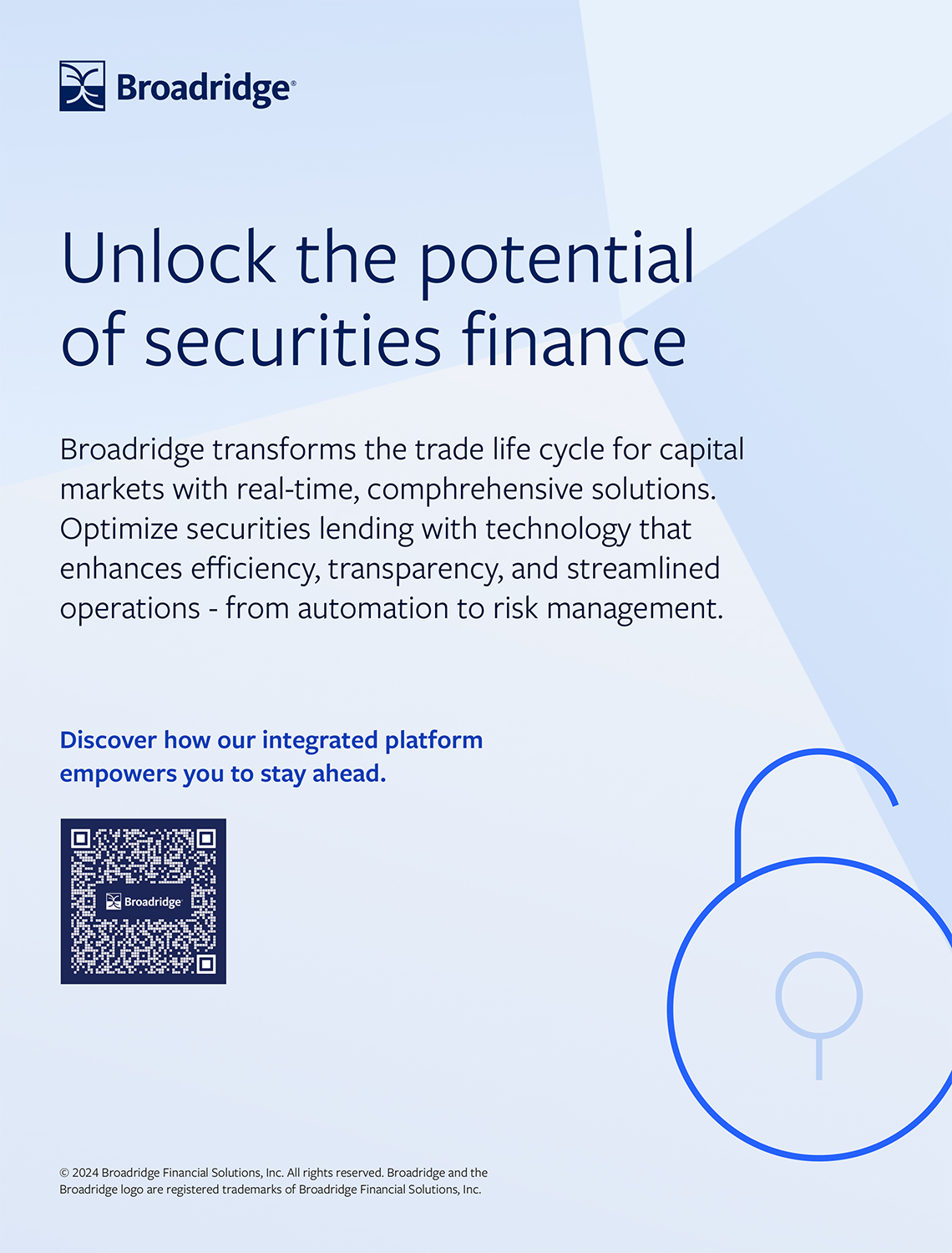Fleming: Innovation needed in collateral management world
11 October 2024 Amsterdam
 Image: peshkova/stock.adobe.com
Image: peshkova/stock.adobe.com
Innovation needs to be implemented within the collateral management world, according to Itzel Soto Narvaez, head of global collateral management at ING.
Balancing the demands of regulation, scrutiny, market conditions, and strategic change. All of these elements compete within the priority list, leaving little room to work on improvement, innovation, and automation, she adds.
The statement came from the Fleming Collateral Management and Securities Lending Forum in Amsterdam.
Automation and AI trends in the collateral management space, as well as how technology and cooperation among the industry can help to better navigate, were key topics of discussion in the ‘Collateral Management Operational Trends and Innovation’ panel.
The collateral management function is fully tested during market turmoil and geopolitical events, she said, and the function needs to demonstrate the resilience, accuracy and organisation of the process.
Soto Narvaez opened her panel with an overview of the main market events that have hit the collateral management domain in the world during 2024.
This included ongoing geopolitical tensions (the war in Ukraine, escalations in the Middle East ect); the sharp downturn in US manufacturing and employment data in August, which led to significant stock market volatility; and the upcoming Taiwanese presidential election, which poses risks to global markets, particularly given the country’s role in the semiconductor industry.
Expanding on this last point, Soto Narvaez warned that any instability in the region could impact supply chains and investor sentiment.
Moving on, she discussed ING’s core focus in the area of collateral management.
“One of the most important aspects for us has been the integration of systems,” said Soto Narvaez. “All collateral activities need to be done in one single platform.”
For ING, it is important to consolidate the collateral processing of securities financing and OTC derivatives in one single system, to better respond to market events, produce meaningful data for the front office for the risk management function, and to increase the level of reporting towards regulators.
Automation and AI
During her discussion at the event, Soto Narvaez explored the main AI trends she has seen in the market, in relation to collateral management.
Currently, vendors are pushing to implement AI-powered margin call optimisation. Soto Narvaez believes this will help to eliminate the need to interpret email communication for margin calls, and instead automate decision-making for margin calls.
“There’s still room to automate further the dispute management and portfolio reconciliation processes,” she added. “AI can further help us here in normalising data for EMIR-related reconciliation.”
In addition, there is a push for the implementation of robotics process automation (RPA), the audience heard.
“On our side, we have already implemented certain robots that help us to execute routinary tasks, especially when it comes to information shared between internal systems, providing a reduction in manual processes,” Soto Narvaez explained.
In regards to blockchain and distributed ledger technology (DLT), she stated that there is still room to incentivise the industry to join proof of concepts. “There has been a push, but there is not a large effort from big participants to prove that the technology works properly and that it can be used.”
Soto Narvaez also touched on trends relating to cloud-based collateral management platforms with AI, AI-driven fraud detection and cybersecurity, as well as advanced reconciliation with AI and RPA.
In her conclusion, she commented: “From my perspective, I believe collateral managers in this upcoming year have a great opportunity to optimise further, to optimise and leverage regulatory change, and to automate even further.
“AI and digitisation is not the new trend but is a necessity to make sure that firms are responding properly to market events and geopolitical circumstances.”
Balancing the demands of regulation, scrutiny, market conditions, and strategic change. All of these elements compete within the priority list, leaving little room to work on improvement, innovation, and automation, she adds.
The statement came from the Fleming Collateral Management and Securities Lending Forum in Amsterdam.
Automation and AI trends in the collateral management space, as well as how technology and cooperation among the industry can help to better navigate, were key topics of discussion in the ‘Collateral Management Operational Trends and Innovation’ panel.
The collateral management function is fully tested during market turmoil and geopolitical events, she said, and the function needs to demonstrate the resilience, accuracy and organisation of the process.
Soto Narvaez opened her panel with an overview of the main market events that have hit the collateral management domain in the world during 2024.
This included ongoing geopolitical tensions (the war in Ukraine, escalations in the Middle East ect); the sharp downturn in US manufacturing and employment data in August, which led to significant stock market volatility; and the upcoming Taiwanese presidential election, which poses risks to global markets, particularly given the country’s role in the semiconductor industry.
Expanding on this last point, Soto Narvaez warned that any instability in the region could impact supply chains and investor sentiment.
Moving on, she discussed ING’s core focus in the area of collateral management.
“One of the most important aspects for us has been the integration of systems,” said Soto Narvaez. “All collateral activities need to be done in one single platform.”
For ING, it is important to consolidate the collateral processing of securities financing and OTC derivatives in one single system, to better respond to market events, produce meaningful data for the front office for the risk management function, and to increase the level of reporting towards regulators.
Automation and AI
During her discussion at the event, Soto Narvaez explored the main AI trends she has seen in the market, in relation to collateral management.
Currently, vendors are pushing to implement AI-powered margin call optimisation. Soto Narvaez believes this will help to eliminate the need to interpret email communication for margin calls, and instead automate decision-making for margin calls.
“There’s still room to automate further the dispute management and portfolio reconciliation processes,” she added. “AI can further help us here in normalising data for EMIR-related reconciliation.”
In addition, there is a push for the implementation of robotics process automation (RPA), the audience heard.
“On our side, we have already implemented certain robots that help us to execute routinary tasks, especially when it comes to information shared between internal systems, providing a reduction in manual processes,” Soto Narvaez explained.
In regards to blockchain and distributed ledger technology (DLT), she stated that there is still room to incentivise the industry to join proof of concepts. “There has been a push, but there is not a large effort from big participants to prove that the technology works properly and that it can be used.”
Soto Narvaez also touched on trends relating to cloud-based collateral management platforms with AI, AI-driven fraud detection and cybersecurity, as well as advanced reconciliation with AI and RPA.
In her conclusion, she commented: “From my perspective, I believe collateral managers in this upcoming year have a great opportunity to optimise further, to optimise and leverage regulatory change, and to automate even further.
“AI and digitisation is not the new trend but is a necessity to make sure that firms are responding properly to market events and geopolitical circumstances.”
NO FEE, NO RISK
100% ON RETURNS If you invest in only one securities finance news source this year, make sure it is your free subscription to Securities Finance Times
100% ON RETURNS If you invest in only one securities finance news source this year, make sure it is your free subscription to Securities Finance Times



